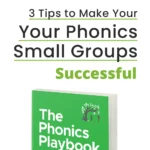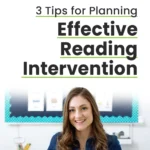I just finished reading Chapter 3 of the Literacy Teacher’s Playbook for our bloggy book study. If you missed my most recent post on the book, you can click {here} to read it.
Chapter 3 was all about synthesizing literacy data and setting goals for students. Serravallo showed us how she assembled the child’s data in multiple areas (comprehension, decoding, writing, fluency, engagement, etc.) and came up with opportunities for growth in each one of those areas. For example, in comprehension, a child might need to deepen her thinking to grasp the main ideas of a text. She put all of these possible areas for growth together and did something she calls “triangulating” the data. In other words, she looked for overarching patterns, for the purpose of determining one single goal that could make a difference for the child in multiple areas. With the data Serravallo was analyzing, she found that teaching the child story structure (beginning-middle-end) and retelling would help the child make growth in her comprehension, writing, and maybe even decoding. This seems like such a smart way to analyze data, and I hope that in my position as a reading specialist next year, I’m able to implement this. When it comes to interventions, maybe we tend to think too specifically – i.e. “This child needs to work on decoding.” However, maybe a child struggles with decoding because she isn’t attending to meaning and self-monitoring comprehension. Reading strengths and difficulties are so intertwined that we need to look across all areas, as Serravallo does, when setting goals for our students.
Here’s a little freebie sheet I created where you can put all of your literacy data for one child in a single place. Click on the image to download!















